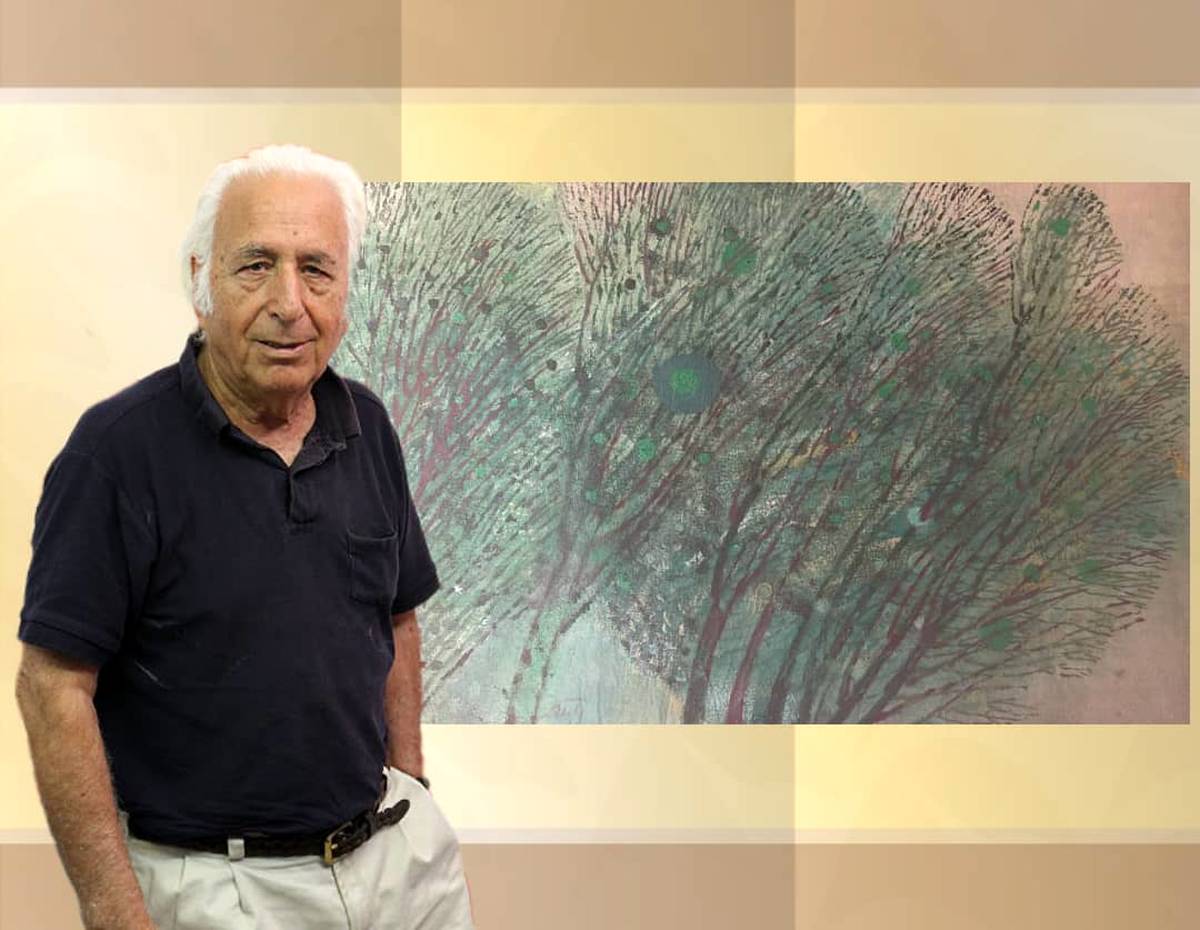
Abolghasem Saidi Turns 100: In Praise of the Poet of Trees
On August 15, 2025, Abolghasem Saidi, the renowned Iranian painter based in Paris, turns 100. He has been called “The Poet of Trees”; in Saidi’s world, trees are not merely a natural subject, but an interpretation of the soul and the rhythm of life.
ArtDayMe – On August 15, 2025, Abolghasem Saidi celebrates his 100th birthday — a century of living and creating within the realm of contemporary Iranian art.
By linking Iranian visual traditions with the language of modern painting, he has taken nature beyond simple description and brought it to a level of expressiveness where simplicity, emotional depth, and philosophical reflection come together. His constant presence in major international exhibitions and collections, and his sustained creativity over decades, have made him one of the most enduring figures in Middle Eastern modern art.
On the occasion of Saidi’s centenary, we look at a work of his kept in the La’al Collection of Fereydoun Ave, the well-known painter and collector:

This painting, like many of his works, is a reminder that art can discover the living language of life out of silence and tranquility.
In this beautiful and calming work, the elongated trunks and slanting branches move like continuous melodies in the wind — a visual rhythm that guides the viewer’s eye upward toward the sky. The green and blue palette conveys freshness and serenity, alongside dark and light dotted touches that create a lively, tactile texture.
In Saidi’s world, trees are not merely a natural subject, but an interpretation of the soul and the rhythm of life.
Here there is no classical perspective or traditional lighting; depth is formed in the layers of color and transparency of the background, and the wine-colored lines of the branches construct the structure and rhythm of the work. By simplifying forms, Saidi distances himself from objective representation and reaches a poetic and subjective expression of nature — where the painting is not a landscape but an emotional, meditative experience of being among trees.
The structure of the image is formed from the vertical repetition of trunks and the curved, rhythmic movement of branches, evoking the feeling of wind or the flow of energy in nature. The visual space is concentrated mainly in the middle and upper sections of the frame, with the lower part more empty, guiding the viewer’s gaze upward. The combination of diagonal and vertical lines creates a visual rhythm that both moves the eye and establishes a poetic beat.
The dominant color palette is based on shades of green and blue, conveying a sense of calm, nature, and freshness. The limited but striking presence of darker colors (brown/wine tones in the trunks and branch lines) creates a gentle visual contrast and strengthens the composition. Dark green and blue spots scattered across the foliage add texture and depth to the work.
The texture results from a combination of fine brushwork, dotting, and perhaps color layering techniques. This texturing gives the leaves and branches a lively, dynamic quality. The mild roughness and tactile quality of the surface strengthen the viewer’s connection to the painting’s physical presence.
The forms are semi-abstract; while the trees are clearly recognizable, the real-life details of nature have been set aside and replaced with the rhythm of lines and patches of color. The trunks are elongated and the branches intertwined, creating a poetic and subjective sense of “tree” rather than a naturalistic depiction. Depth is created more through layers of color and relative transparency in the background than through traditional perspective. The density of lines in the middle and upper parts, and their reduction toward the edges, evoke the feeling of wind and shifting distance.

The branch lines, painted in wine tones with varied rhythms, play a key role in forming the movement and cohesion of the work. Their upward, diagonal direction conveys ascending energy and growth. The work lacks direct lighting and classical shading; instead, light appears in the form of lighter background colors and color patches. This approach moves the work toward expression and a poetic mood rather than realistic representation.
Nature in Saidi’s vision often takes on a mental and poetic form; the trees in this work may be a metaphor for endurance, communal life, or even collective spirit. The brushstrokes and branch rhythms suggest the wind or seasonal change, which may indicate the passage of time. The calm colors and repetitive rhythm may also allude to meditation and inner peace.
This work, kept in the La’al Collection of Fereydoun Ave, is a blend of poetic expressionism and imaginative naturalism. The forms are simplified, with emphasis on the feeling and rhythm of nature rather than precise depiction. Staying true to the visual elements of nature, yet using a personal and abstract language, is a distinctive hallmark of Saidi’s style.
The painting has an atmosphere that is at once calm, poetic, and dynamic. The viewer’s gaze moves between the serenity of the greens and the liveliness of the lines. This work conveys not so much the narrative of a natural scene as the emotional experience of being among trees.

Abolghasem Saidi was born in 1925 in Arak, Iran. In 1950, he moved to France to study at the École des Beaux-Arts in Paris, graduating in 1955. Since then, he has lived in both Iran and France. In 1960, Saidi won second prize at the Second Tehran Painting Biennial, and six years later won the Grand Prize at the Fifth Tehran Biennial. In 1959, he also received the Young Painters’ Prize of France.
His works are preserved in notable private collections and museums, including the Tehran Museum of Contemporary Art. Saidi’s paintings have been exhibited in numerous shows in France, Belgium, Spain, Switzerland, and, of course, Iran.

LEAVE A RELPY